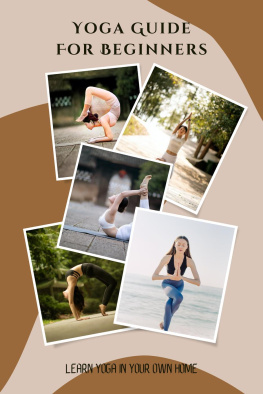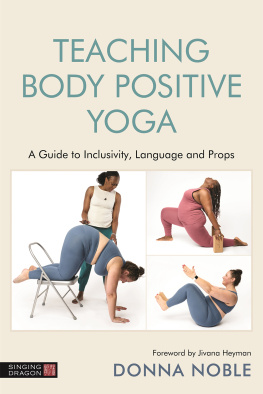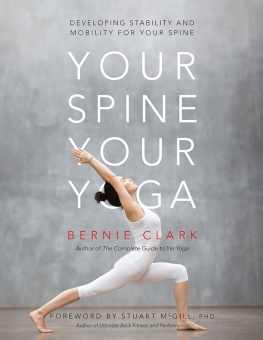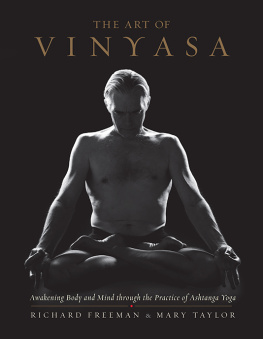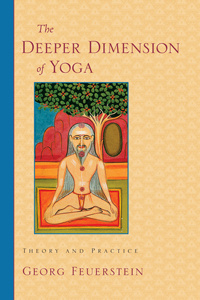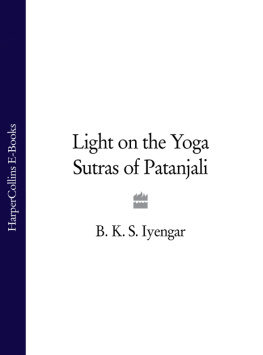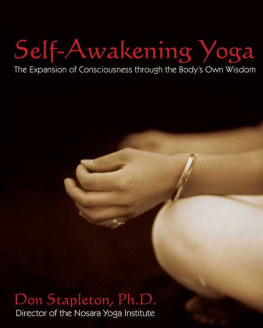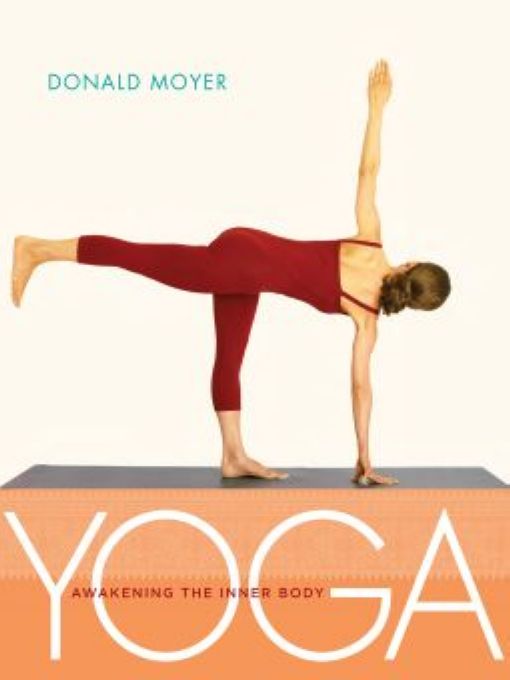Table of Contents
Yoga: Awakening the Inner Body, copyright 2006 by Donald Moyer. Cover and interior photographs copyright 2006 by David Martinez, Inc. Illustrations and painted papers copyright 2006 by Krista McCurdy. All rights reserved.
No part of this book may be reproduced or transmitted in any form or by any means, electronic or mechanical, including photocopying, recording, or by an information storage or retrieval system, without written permission from Rodmell Press, 2147 Blake St., Berkeley, CA 94704-2715; (510) 841-3123, (510) 841-3191 (fax), info@rodmellpress.com, www.rodmellpress.com.
To Sri B. K. S. Iyengar, with gratitude
ACKNOWLEDGMENTS
MANY PEOPLE have helped me in the writing of this book, but I want to express special feelings of gratitude to the following: Sri B. K. S. Iyengar, for inspiring my practice and my teaching through his compassion, his genius, and his dedication to yoga; My dear friend and mentor Maureen Carruthers, for first encouraging me to teach yoga, and for remaining my ideal of a sensitive, caring, and ultimately wise teacher;
Mary Lou Weprin, my incomparable codirector, and my other colleagues at The Yoga Room, especially Vicky Palmer, Barbara Papini, Gay White, Sandy Blaine, and Marie Hart, for working together selflessly to create an environment of mutual support and respect;
Workshop hosts Barbara Fergusson and Todd Jackson in Portland, Oregon; Annie Stocker, Wendy Groesbeck, and Chris Luboff in Seattle, Washington; Lynne Minton and Kathy Vasquez in Anchorage, Alaska; Candace Carey Satlak and Joseph Satlak in Boston; and Genny Kapuler in New York, for providing a forum for me to present the ideas in this book;
My students throughout the years, for helping me to understand what works and what doesnt work, and for teaching me to pay attention to individual needs and differences;
Susan Leigh Foster, for writing the preface in which her natural enthusiasm and keen intelligence shine through, and for offering many helpful suggestions for revising the text;
Shari Ser, P.T., for checking the accuracy of my anatomical details and for helping me to clarify my instructions;
Candace Carey Satlak and Joseph Satlak, for reading the manuscript meticulously, and for showing boundless patience, good humor, and dedication as models for this book;
Todd Jackson, for faithfully recording my seminars;
Craige Roberts, for generously archiving a work in progress;
Gopa and Veetam Campbell, at Gopa & Ted2, Inc., for encouraging people to use this book with their spacious and elegant design;
David Martinez, for creating the beautiful photographs in this book and for assembling an amazing crew: Mark Dawson (digital technician), France Dushane (hair and makeup), Malcolm Fearon (photographers assistant), Aneata Ferguson (studio manager), Kristen Flammer (studio manager), and Jeff Mason (caterer);
Krista McCurdy, for breaking new ground with her inventive illustrations and for her delightful spirit;
Katherine L. Kaiser, for copyediting with care, and Ty Koontz, for creating the index;
Most important, Linda Cogozzo, copublisher at Rodmell Press, for encouraging me to write about yoga in the first place, and for guiding this book through its many stages. This project could not have succeeded without her tireless efforts, her high standards, and her expertise.
PREFACE BY SUSAN LEIGH FOSTER
WHEN I WALK INTO The Yoga Room, lodged in the annex of the Julia Morgan Center, a magnificent redwood building in Berkeley, California, designed by architect Julia Morgan, I feel lighter and more buoyant. The space resonates with the vibrant energy of alert practitioners whose exploration of yoga has been guided and encouraged by Donald Moyer. His gentle instructions, as practiced by many astute and diligent bodies throughout the years, have permeated the room, giving it a quiet jubilance.
In his teaching, Donald sets up class as a site of inquiry and investigation. He approaches each asana as if engaging with a proposition: What if we focus on the lesser trochanter or the xiphoid process? Instead of reciting a list of requirements, such as, The leg is placed here or The chest is lifted there, he asks students to focus their awareness on a particular area of the body and then to track its functioning through different poses. In this process, we learn the complexities of anatomy and the subtle integration of all parts of the body in each asana.
We also learn that there is no single right way to do a pose, but instead, that each body can realize its distinctive enactment of asana by reckoning with its history and structure. Some bodies have longer forearms or tighter hip joints; some work at the computer and others build houses. Some bodies need to adjust for these specificities by narrowing, others by widening; some by lengthening, others by firming; some by pressing, others by lifting. Thus, Donalds classes celebrate all different types of bodies and their variegated approaches to the dynamics, rather than the appearance, of asana.
Donald carefully chooses the descriptive language he uses in class so as to frame his instructions for poses in the positive. He seldom tells a student what not to do, nor does he invoke terms such as lock, hit, or harden. Instead, he guides the body toward the pose with directives such as lengthen or expand in order to encourage a students increasing awareness of the bodys needs and inclinations. This use of language also establishes a harmonious dialogue among awareness, will, and body: How does it feel to do the pose this way? Or this way? Where does my effort come from? What kind of effort brings transformation? As our bodies respond, we learn to listen.
Instead of getting it right, finally, we learn from Donalds teaching to approach yoga as an ongoing unfolding of awareness. There is a limitless number of perspectives from which to examine each asana; there is an equally unlimited number of physicalities, who will engage poses uniquely. What matters is the daily invocation of a conversation within ourselves about how and what we are feeling, a conversation in which we experience how the work in the poses brings changes in mind and spirit as well as body.
SUSAN LEIGH FOSTER is a choreographer, scholar, and the author of Reading Dancing: Bodies and Subjects in Contemporary American Dance (University of California Press) and Dances That Describe Themselves: The Improvised Choreography of Richard Bull (Wesleyan University Press).
Working with B. K. S. Iyengar, Donald gained a meticulous and profound understanding of the body, and he also apprehended Iyengars commitment to yoga as a continuous process of investigation. As many of his students know, Iyengar has revised his instructions and commentary about asana many times throughout the years, partly in response to the changing group of students he has instructed, and partly in response to his own deepening inquiry into yoga. That spirit of inquiry places a responsibility on each student to embrace the practice of yoga and find its meaning. Donald emphasizes this inquiry in his classes through the concentrated yet informal tone of his comments, his delight in the complexities of practice, his unassuming willingness to entertain questions, his enthusiasm at students growing awareness, his rigor, and his generosity.



